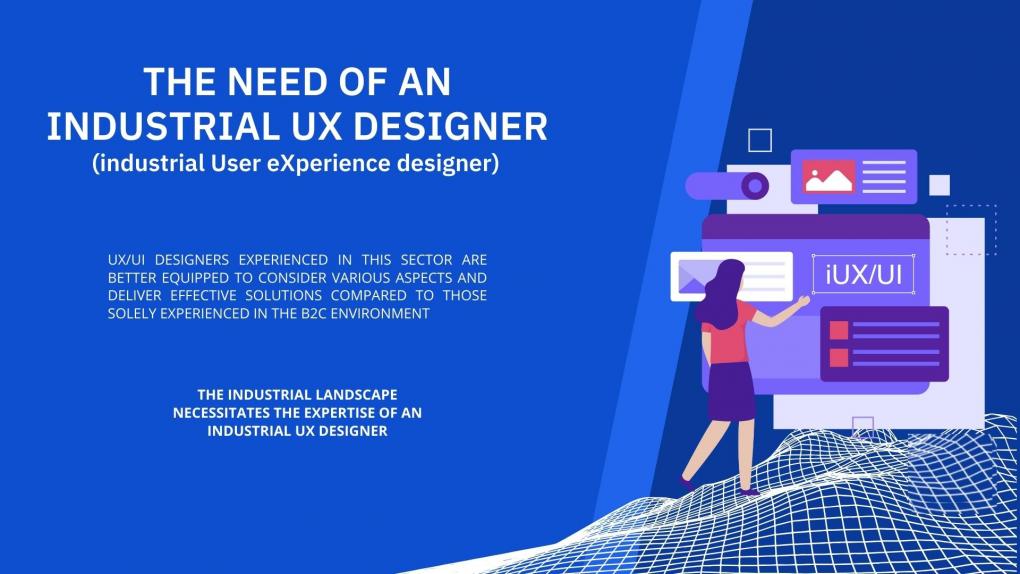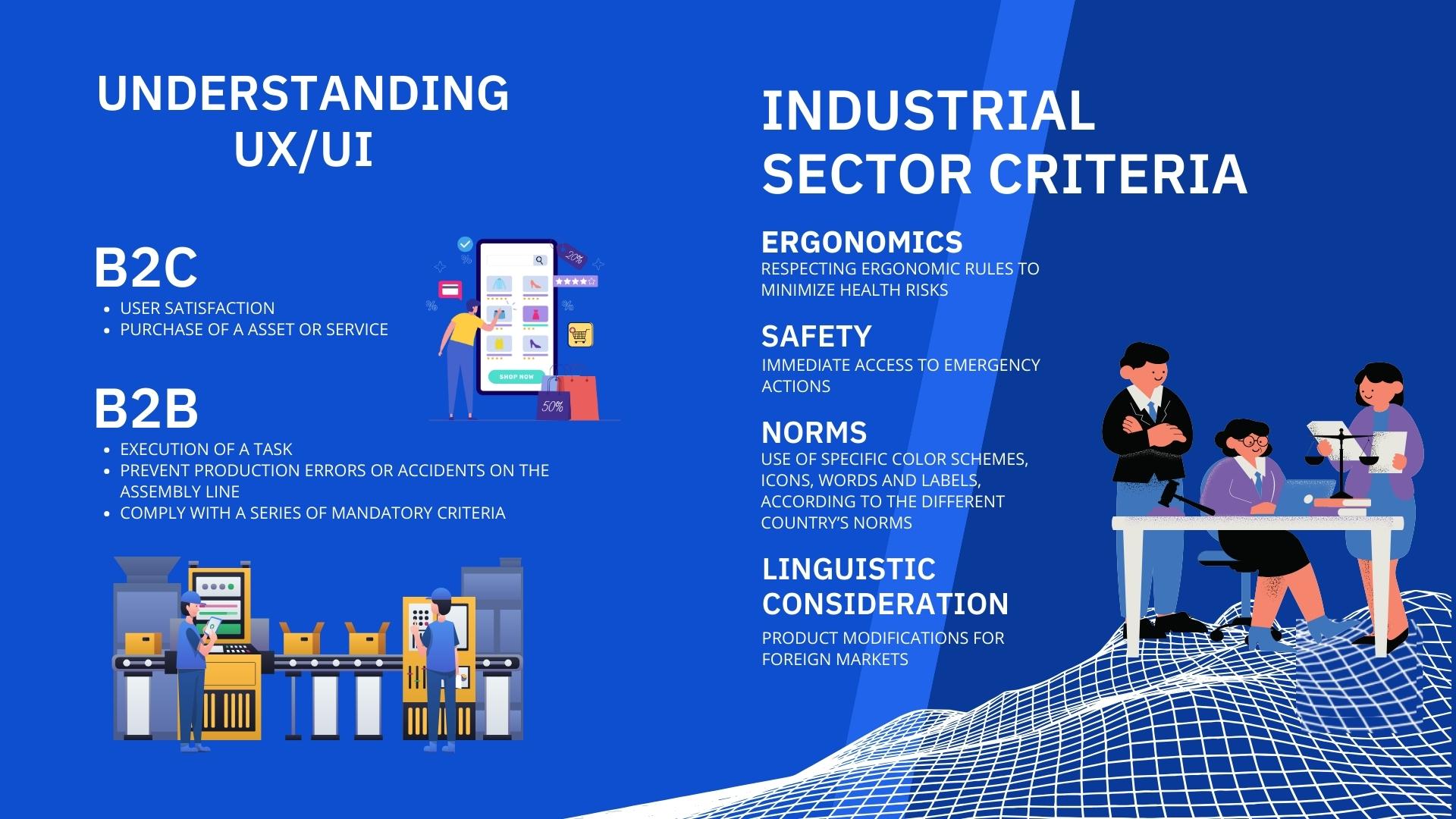
Understanding UX/UI
"User Experience" (UX), coined by engineer/psychologist Donald Norman, encapsulates an individual's interaction with all elements, cognitive and physical, in both analog and digital systems.
It encompasses emotions, perceptions, and responses during interaction via the "User Interface" (UI), which comprises visual elements like symbols, graphics, and words.
While applicable to both consumer (B2C) and industrial (B2B) realms, distinctions arise due to differing needs. B2C focuses on user satisfaction and preferences, while B2B prioritizes task execution efficiency and error reduction.
Industrial sector Criteria
Also, for the industrial sector, adherence to specific criteria is crucial:
- Ergonomics: Aligning with ergonomic principles, human percentiles, and long-term health effects. Industrial machines, designed for continuous use, must minimize health risks.
- Security: Immediate access to emergency actions. All industrial machines should feature a physical, easily understandable emergency stop button, along with established security protocols.
- Norms: Adhering to colour schemes, icons, words, and labels based on country-specific regulations (EMEA, APAC, NAFTA, LATAM).
- Linguistic Considerations: Accounting for translations, LTR or RTL directions, and icon meanings based on the machine's country of use.
Conclusion
The need of an Industrial UX Designer In the industrial realm, enhancing productivity and minimizing errors is paramount. UX/UI designers experienced in this sector are better equipped to consider various aspects and deliver effective solutions compared to those solely experienced in the B2C environment. The industrial landscape necessitates the expertise of an Industrial UX Designer.



